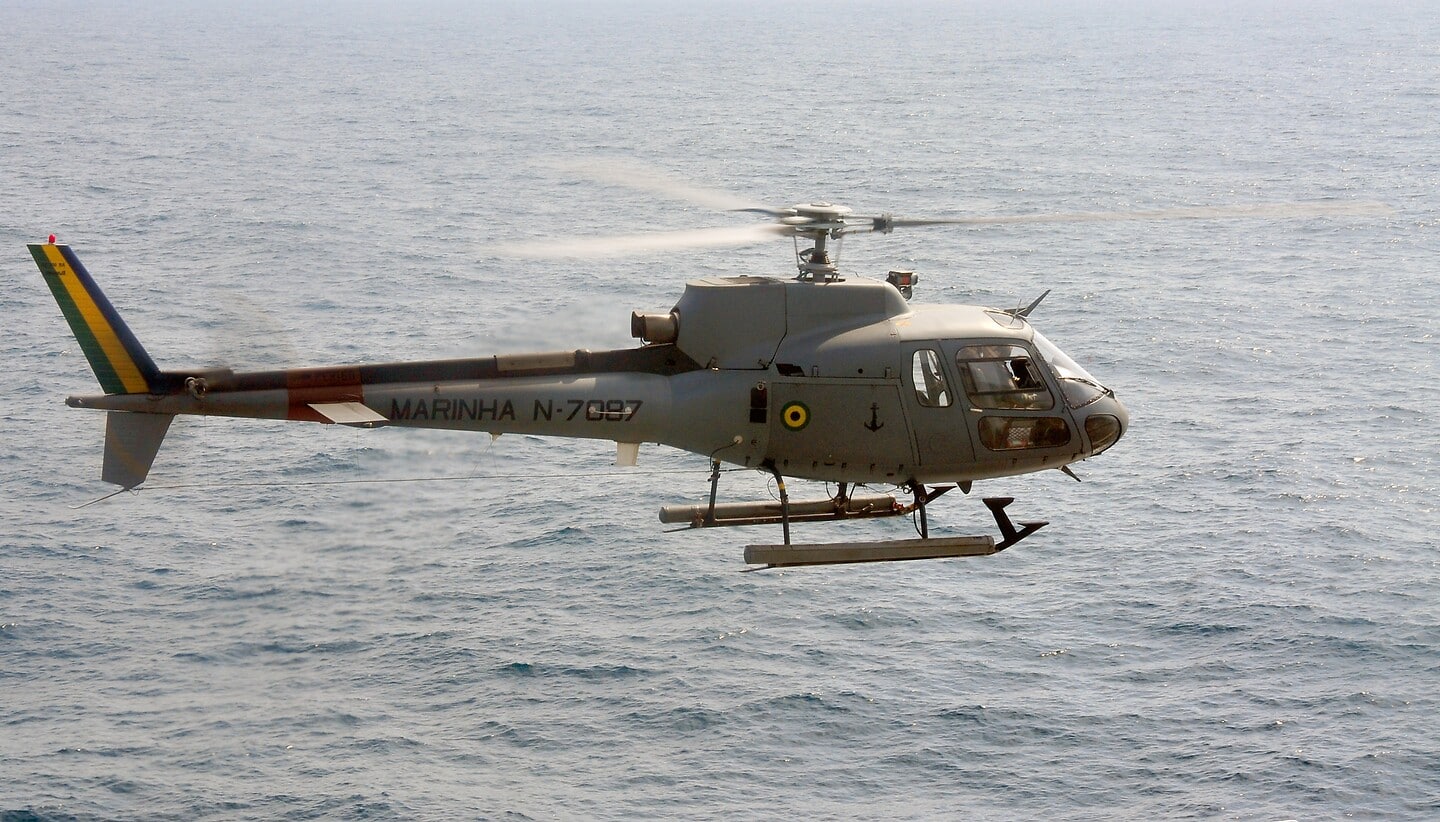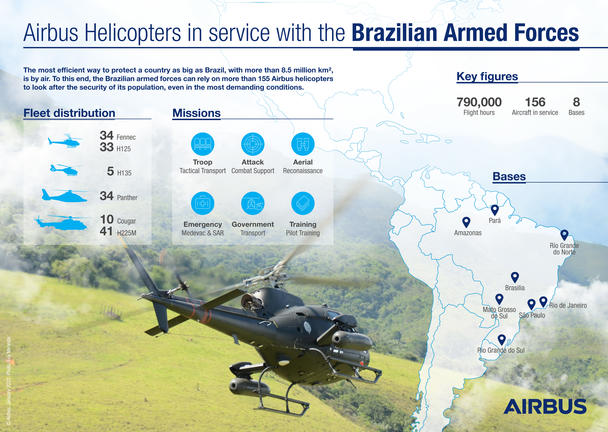Aerospace
The Brazilian armed forces acquire 27 H125 helicopters
It has acquired 27 single-engine H125 helicopters to boost the training capacity of the Brazilian Navy and the Air Force

Brasilia, The Brazilian armed forces, through the Combat Aircraft Programme Coordinating Committee (COPAC), has acquired 27 single-engine H125 helicopters to boost the training capacity of the Brazilian Navy and the Air Force.
The H125 will be produced in the H125 final assembly line located in Itajubá, Brazil at Helibras’ factory where the H225Ms for the Brazilian armed forces are also assembled. These new helicopters will replace the aging AS350 and Bell 206 helicopters currently in service with the Brazilian Air Force and the Brazilian Navy respectively.
“This joint procurement contract represents the realization of a project that will equip both the Brazilian Air Force and Navy with modern aircraft that will meet the needs of the Forces for the next 30 years,” said Commander of the Air Force, Lieutenant Brigadier Carlos de Almeida Baptista Junior.

“Airbus Helicopters is proud to see the H125 supporting the training of the next generation of pilots of the Brazilian armed forces. The H125 is a versatile helicopter used widely in both the civil and military markets as a training platform thanks to its ruggedness, reliability, and easy maintenance. We are honored by the continued confidence of the Brazilian armed forces after more than 40 years of cooperation,” said Bruno Even, CEO of Airbus Helicopters.
Aircraft comparison Brazil’s KC-390 vs Japan’s Kawasaki C-2(Opens in a new browser tab)
The new H125 helicopters will have a G500H TXi double glass cockpit and VEMD (Vehicle & Engine Multifunction Display) and will be compatible with the use of night vision goggles (NVG). They will also include different types of mission equipment such as a winch and a hook so that the training of future pilots is as representative of their missions as possible.
The Brazilian armed forces currently operate a total of 156 Airbus helicopters deployed from its eight bases across the country. Its fleet ranges from the light single engine Ecureuil family to the multi-purpose heavy H225M helicopter, 67 and 41 helicopters respectively, to cover a wide array of missions such as tactical transport, search and rescue missions, and civil population support.
10 things about Embraer KC 390.(Opens in a new browser tab)
The worldwide best-selling H125 has accumulated more than 37 million flight hours with more than 5350 helicopters currently in operation. The model, known for its robustness and versatility, is widely used in high-performance missions.
IAF to induct first batch of domestically built LCH at Jodhpur (Opens in a new browser tab)
#H125 @marmilbr @fab_oficial @AirbusHeli @helibras

Aerospace
When Ratan Tata was denied entry to the airfield at the Aero India show, he waited

During our visit to Aero India 2019, we had the unexpected opportunity to see Ratan Tata at the event, which was a thrilling moment for us. However, there was a surprising hiccup when the security staff didn’t allow him to enter due to a lack of a security pass.
Despite this, he remained calm and patiently waited for about 20 minutes until a member of the Tata team brought him the required pass, after which he calmly proceeded inside. It was a humbling sight, showcasing his composed demeanor even in such situations.
Ratan Tata ji is not only a renowned industrialist but also a trained pilot, holding a pilot’s license. In 2007, he became the first Indian civilian to fly the F-16 Falcon during the Aero India show in Bangalore—a proud moment for the nation.
His passion for aviation extended beyond flying, as he played a key role in shaping India’s aerospace industry. Under his leadership, Tata ventured into manufacturing and maintaining aerospace components while upholding its legacy of quality. Notably, Tata’s collaboration with Airbus to develop and manufacture the C295 aircraft is a testament to its growing influence in the sector.
-

 Aviation2 months ago
Aviation2 months agoMicrosoft Flight Simulator Raises $3 Million to Bring Back the An-225 Mriya
-

 Airlines2 months ago
Airlines2 months agoQatar Citizens Can Travel to the United States Without a Visa
-

 Aviation2 months ago
Aviation2 months agoQatar Airways bans these new Electronic Devices on plane
-

 Airlines2 months ago
Airlines2 months agoJapan Airlines Rolls Out Free Domestic Flights to International Passengers
-

 Defence2 months ago
Defence2 months agoWhich Country Has the Largest Fleet of Fighter Aircraft?
-

 Airport2 months ago
Airport2 months agoWestern Sydney Airport Welcomes Its First Plane After 6 Years of construction
-

 Travel2 months ago
Travel2 months agoQatar Airways Launches Four Additional Flights from Amsterdam
-

 Aviation2 months ago
Aviation2 months agoDid you know ? Once Boeing 747 carried 1088 passenger in 1991








